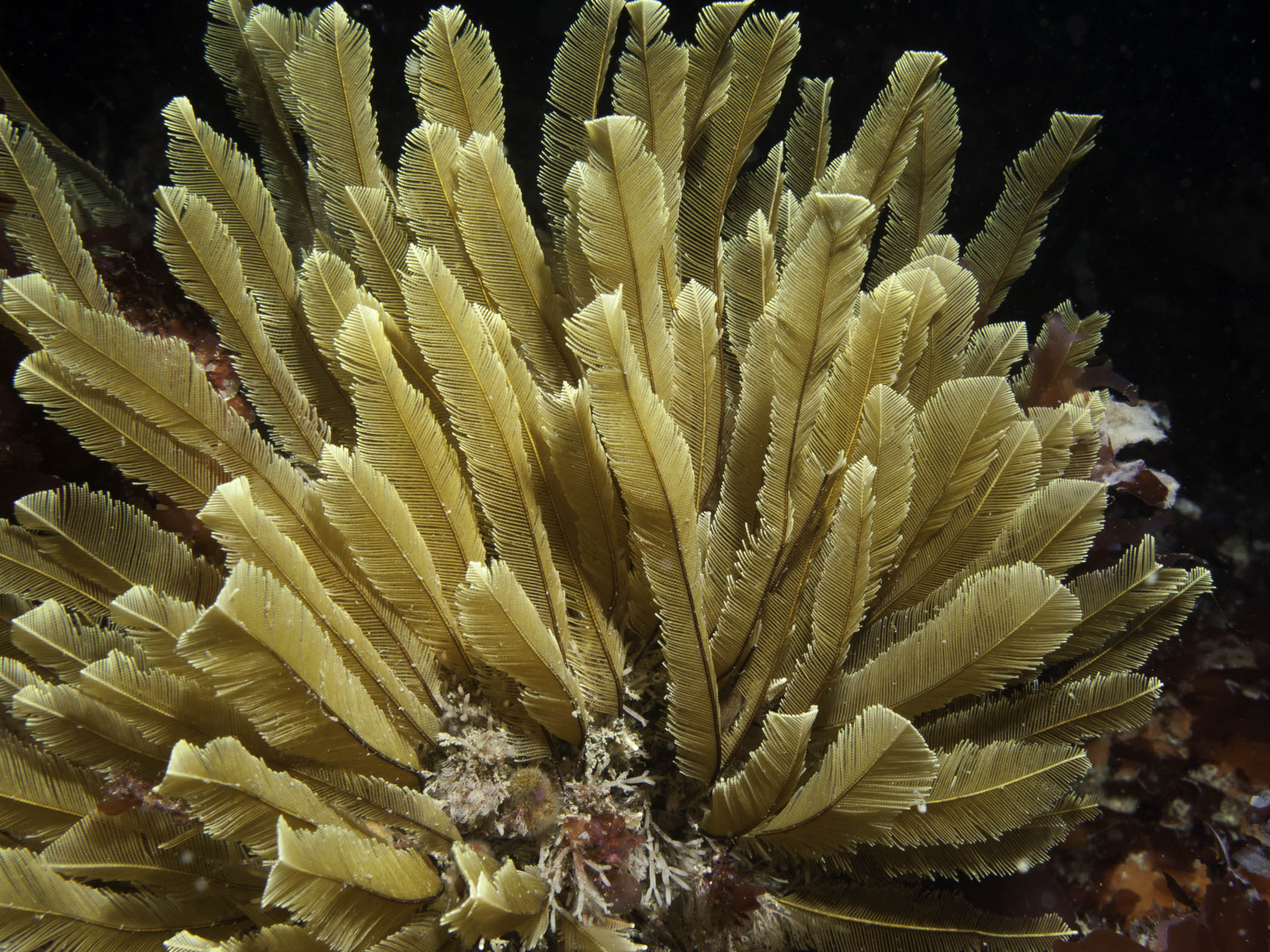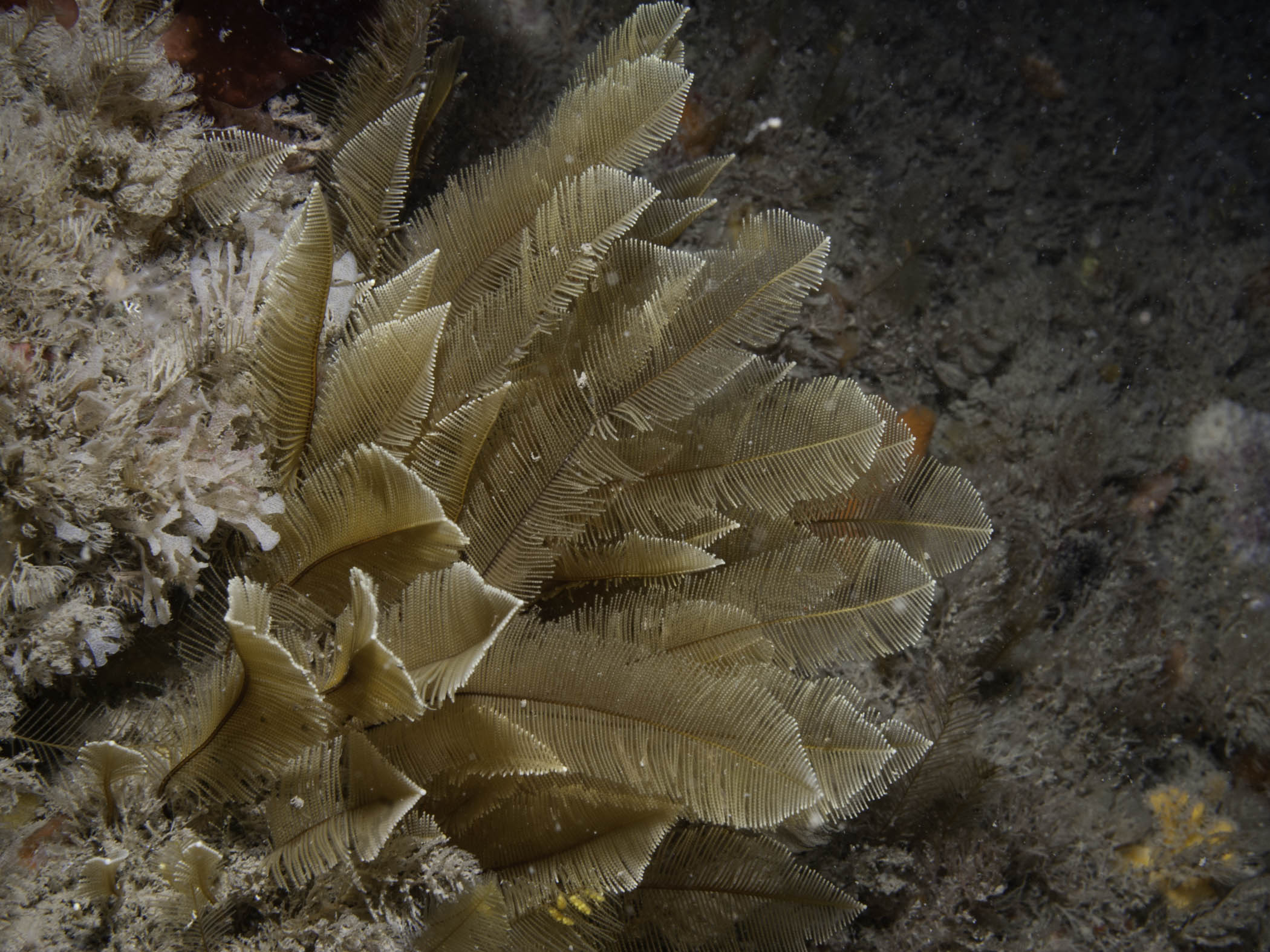| CNIDARIA : Leptothecata : Aglaopheniidae | SEA ANEMONES AND HYDROIDS |
Gymnangium montagui (Billard, 1912)
 |
| Gymnangium montagui |
Description: The main stems of this species bear side branches in alternating series on opposite sides of the main stem, forming a feather-like colony. The colour of living specimens is deep brown. The feeding polyps are borne in a single series along the side branches, each surrounded by three defensive polyps. This species reproduces from September through November, bearing white spherical capsules along the midrib of each plume. Typically 90 mm in height by about 20 mm across the colony.
Habitat: This is a scarce hydroid species found in clear water deeper than 10 metres, where it forms dense clumps on horizontal rock surfaces in moderate tidal streams and moderate to high levels of wave exposure.
Distribution: In the British Isles this is a southern species, with records from SW England and Wales, and the west coast of Ireland north to Rathlin Island, Co Antrim.
Similar Species: All species of Aglaophenia are similar but smaller and have their reproductive structures enclosed in corbulae.
Key Identification Features:
- Brown feathers in loose clusters.
- Reproductive structures in white spherical capsules attached to the midrib.
Distribution Map from NBN: Gymnangium montagui at National Biodiversity Network mapping facility, data for UK.
iNaturalist: Gymnangium montagui at iNaturalist World Species Observations database.
GBIF data for Gymnangium montagui
WoRMS: Gymnangium montagui at World Register of Marine Species. Accepted name: Gymnangium montagui (Billard, 1912). AphiaID: 117299.
Classification: Biota; Animalia; Cnidaria; Medusozoa; Hydrozoa; Hydroidolina; Leptothecata; Plumularioidea; Aglaopheniidae; Gymnangium
| Previous species | Next species |
| Picton, B.E. & Morrow, C.C. (2024). Gymnangium montagui. (Billard, 1912). [In] Encyclopedia of Marine Life of Britain and Ireland. https://www2.habitas.org.uk/marbiop-ni/speciesaccounts.php?item=D5610. Accessed on 2025-04-09 |
